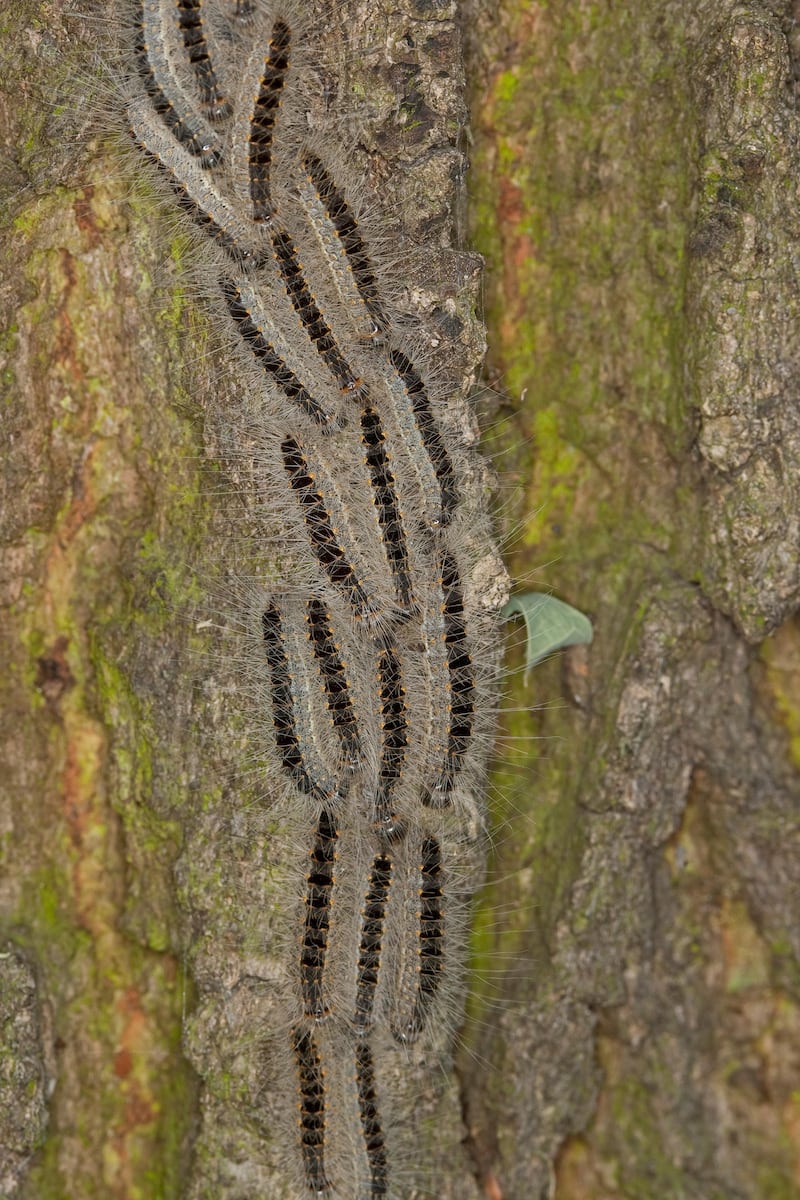An investigation into the discovery of oak processionary moths – which can kill trees and damage human health – has found the invasive pests bred in Ireland.
The discovery of nests in a stand of oak trees in a housing estate near the Phoenix Park in the summer led to an inspection of more than 6,000 trees in the park and the Dublin 15 area by surveyors from the Department of Agriculture, Food and the Marine (DAFM).
Caterpillars from the nests of the oak processionary moth, or Thaumetopoea processionea, were found in four oak trees in a housing estate in Dublin 15. They were determined to be two years old and have since been destroyed.
However Joe McConville, secretary of the Arboricultural Association’s Irish branch, said the concerning aspect of the discovery was the age of the colony. He said the life cycle of the moth – from egg through caterpillar to moth to laying a new generation of eggs – was about one year.
READ MORE
Mr McConville said the colony was determined to be two years old, meaning these caterpillars had been bred in Ireland.
“The moths can fly up to 20 kilometres in the prevailing wind – it is worrying,” he said.
Ireland has a protected zone status under EU plant health legislation for this pest and is the last EU member state to remain officially uninhabited by it.
The larvae of the moth mainly feed on oak foliage but have been observed on other species including acacia, birch, hornbeam, hawthorn, hazel and beech.
The caterpillars feed on leaves and can cause severe defoliation, leaving trees weakened and open to secondary infections from other pest and diseases, according to DAFM.

The first finding of the eggs in Ireland was discovered in a public park in Dún Laoghaire in July 2020. It is thought the trees came in on saplings from abroad.
DAFM warned people at the time not to handle or to get close to the caterpillars, which can shed hairs and provoke allergic reactions leading to skin rashes, conjunctivitis and respiratory problems such as pharyngitis and asthma.
Following the discovery of the caterpillars this year, DAFM moved promptly to set up a “demarcated area” around the infected site consisting of an infested zone of 500 metres radius, and a buffer zone of 5km, which extended into the Phoenix Park.
A team of inspectors was assigned to quadrants and surveying began immediately, commencing from the infected site and working outwards in concentric circles. Surveying, until mid-July, consisted of visual inspections of oak trees in the demarcated area. From mid-July onwards, trapping methods were used.
DAFM said there were no further findings of oak procession moths or caterpillars in the demarcation area.
[ How should this invasive lady be treated? Readers’ nature queriesOpens in new window ]
Mr McConville said both adults and children should stay away from any suspected sightings of the caterpillars, and suspected sightings should be treated with extreme caution and notified immediately to DAFM with your contact details and geolocation of the sighting by e-mailing plantandpests@agriculture.gov.ie or by telephone to (01) 505 8885.
- Sign up for push alerts and have the best news, analysis and comment delivered directly to your phone
- Find The Irish Times on WhatsApp and stay up to date
- Our In The News podcast is now published daily – Find the latest episode here














